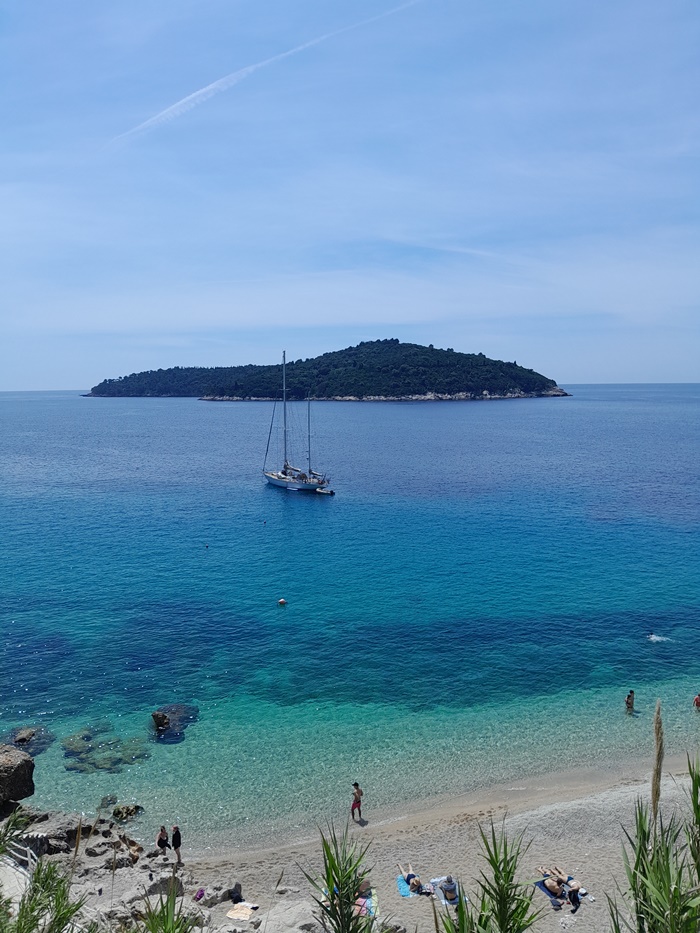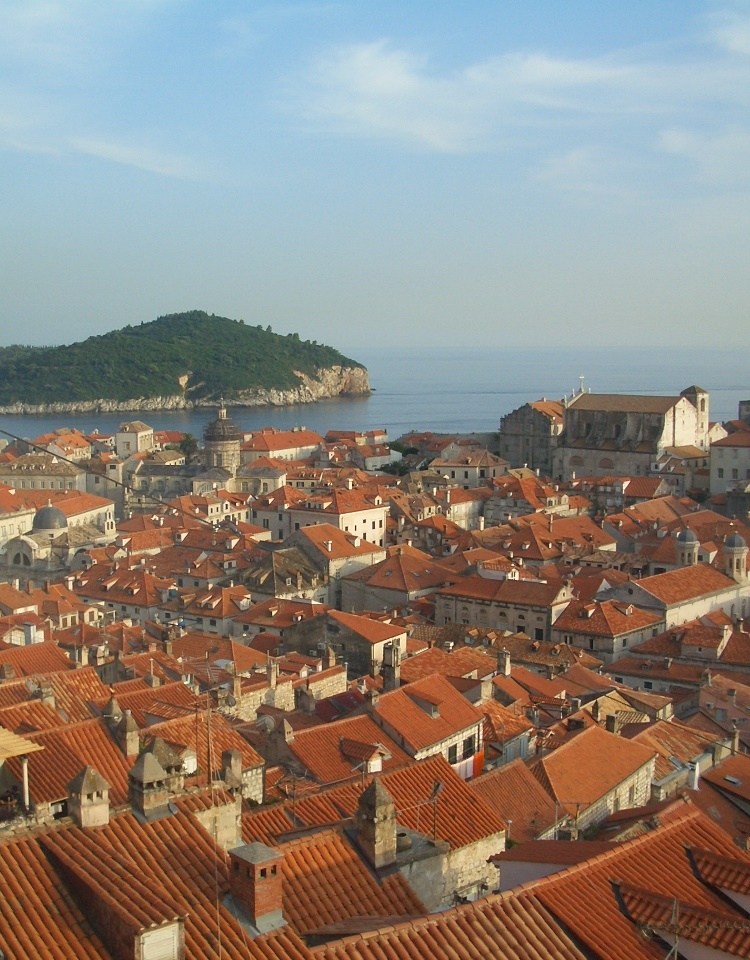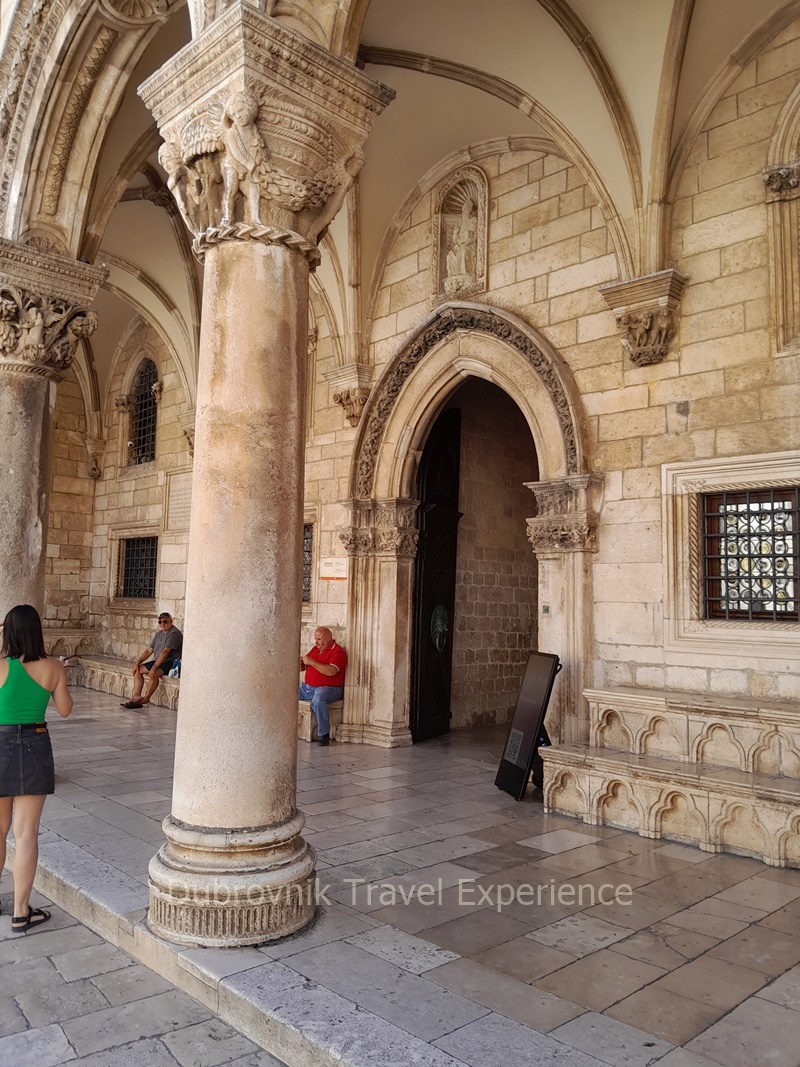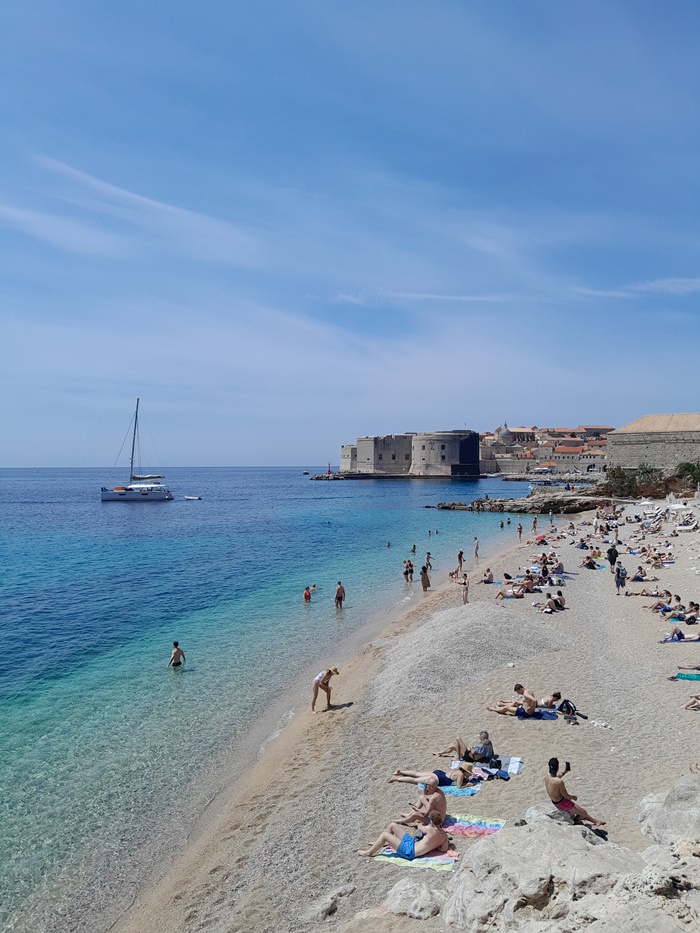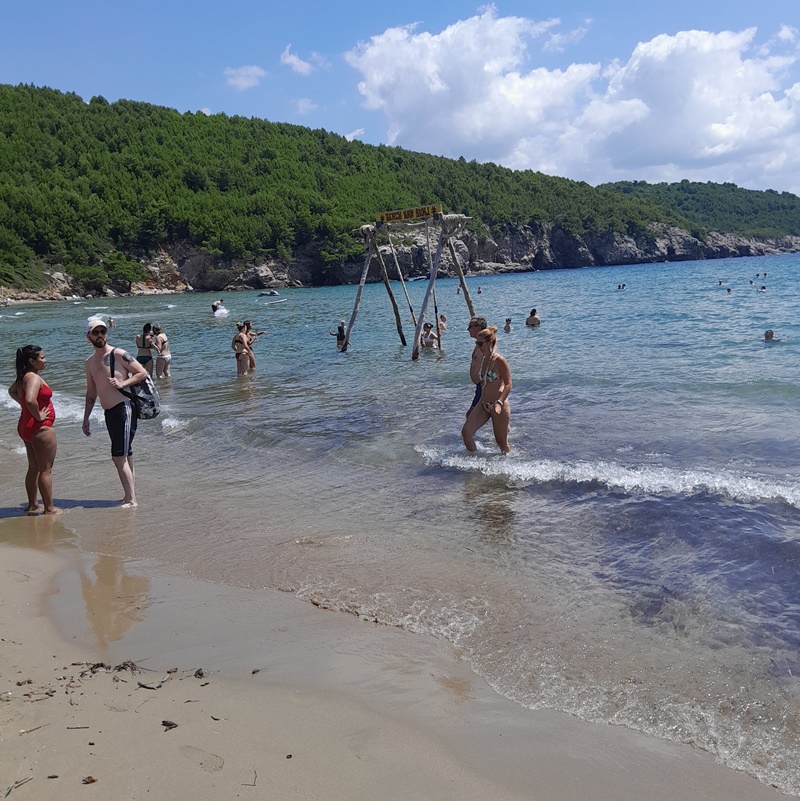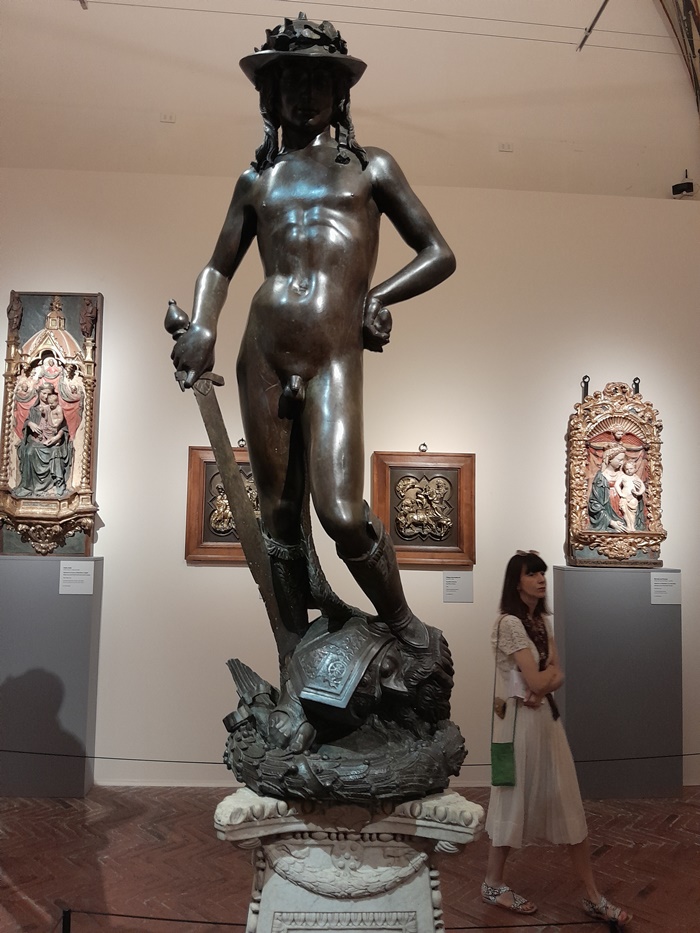- Home
- Discover Italy Guide
- Rome on a Budget
Rome on a Budget 2025: The Money-Saving Travel Guide
The beautiful Rome is on everyone's travel bucket list once in a lifetime but you may assume that you need a large budget to visit it. We assure you that you can visit Rome on a budget, but just with good planning of your visit.
Read on to find out useful tips and ideas on ways to save money when travelling to Rome, including finding budget stay, planning sightseeing for free or with discounts, saving on dining and much more.
👉 Grab Rome tours on sale now!
1. Plan ahead your trip to Rome
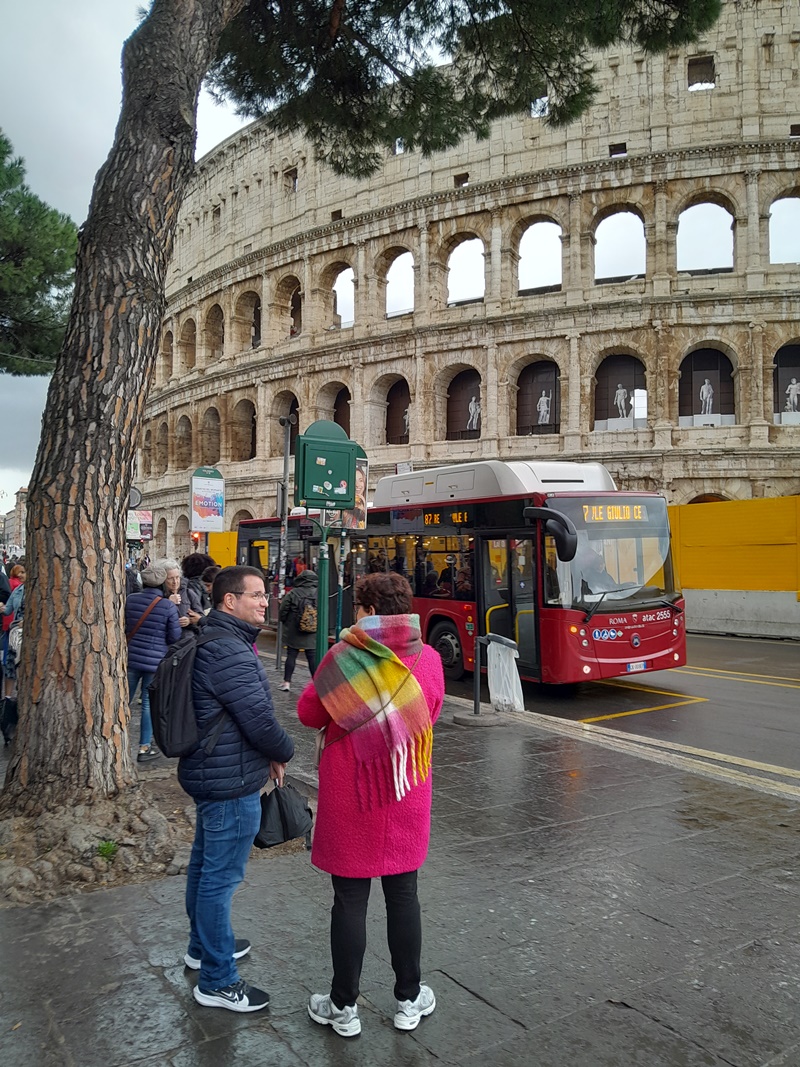 Experience the beautiful city of Rome in fall and winter months
Experience the beautiful city of Rome in fall and winter monthsThis webpage contains affiliate links. Please read our disclosure policy.
If you want to visit Rome on a budget, you should plan your trip ahead. Be sure to book everything long ago before your travel, starting from your accommodation, airport transfers, trains as well as tours and day trips.
Find your place to stay
Look for your accommodation well in-advance (5-6 months) to find a cheap hotel or apartment. Booking.com is a great website for searching your accommodation. Once you book, you'll get confirmation mail with all details about the chosen property (how to get there, check-in times and other useful things).
Just be prepared for non-refundable bookings when booking budget options.
Book train tickets ahead
If you are travelling to multiple destinations and taking a train, book it also in advance which will save you a lot of money. You'll find for example, Rome to Florence train tickets (fast train) for only €18 if you book 4-5 months in-advance. Book your tickets via Trainline and you'll receive them to your email (plus they can be easily changed or cancelled online).
Plan your sightseeing
We always plan sightseeing in Rome in advance. It's wise to book tickets for some major sights like the Colosseum in advance (at least 2-3 months, especially if you are visiting Arena or Underground area. Tickets for the Vatican Museums should also be booked well in advance.
If we plan to take a guided tour, we always brose through Viator before our travel. You'll find there many discounted tours, classes and tickets. The process of booking is also easy and quick. You'll get confirmation mail and you're all set.
We handpicked tours and tickets in Rome on sale in 2025, so you don't have to waste your time - just click here.
2. Visit Rome in low season (from November until April)
Rome is a ideal travel destination all-year round, from spring to summer and also during colder months. Every season brings something special in this amazing city.
This is the reason why there is no off-season in Rome, just lower season, which lasts from November until April (with exception of period around Christmas and New Year (from 22th December until 6th January).
 Even in the rain, Rome is still so beautiful!
Even in the rain, Rome is still so beautiful!If you want to visit Rome without large crowds this is the time to go. Plus, hotels and apartments are very affordable in this period. You can find hotel stays for €80 per night for double room, and those luxurious ones for €120 per night. Apartment stays are even lower than hotels.
We love to search places to stay at Booking.com as they offer huge choice of hotels and apartments and it's easy to book, in just a few clicks. For most hotels, you don't have to pay immediately, but once you arrive there. Check out our guide on where to stay in Rome (with recommended places).
If you are concerned about the weather, winter months can be rainy but it's not cold and you'll enjoy exploring Rome.
Airline companies also offer lower prices during the fall and winter. Here are some useful tips:
- Vueling Airlines connects Rome with numerous European destinations year-round (fly to Rome from London, Barcelona or Athena)
- Fly into Rome from Paris with Air France all-year round.
- From London, there are daily flights to both Rome and Florence, from where you can catch high-speed trains to any destination within Italy.
- Aegean Airlines flies between Rome and Athens all-year round (it's only 2 hour flight).
3. Find budget stays in Rome
 Rome offers many options for a budget stay!
Rome offers many options for a budget stay!Hotels in Rome are some of the most expensive in the world. Some charge thousands of euros per room, per night. Luckily, there's an array of great and affordable alternatives in this amazing city.
Whether you’re looking for a room at a familiar chain, a unique boutique apartment, or a cheap yet cheerful place to bed down for the night, there’s a place on our list for you. Here are our favourite affordable hotels in Rome where you can stay for €150 or less per night, without having to sacrifice on comfort, style, or location.
Best Rome budget hotels:
- Hotel Lancelot (a short stroll from the Colosseum)
- Villa Matissa (in Trastevere)
- Hotel Della Torre Argentina (near the Pantheon)
- Fragrance Hotel St. Peter (near St. Peter's Square)
- Hotel Boutique Nazionale (between Termini and the Colosseum)
- Eccelso Hotel (steps away from Vatican)
4. Stay in residential areas or near Rome (save on accommodation)
 Monti neighbourhood in Rome
Monti neighbourhood in RomeAnother great way to save on visiting Rome it to avoid staying in historic centre of Rome and choose apartments or hotels in residential areas of Rome where you can immerse yourself into the local life and mingle with locals.
However, you'll find also affordable places right next to the Colosseum or Trevi Fountain, you just need to browse through accommodation options from time to time, and book when they offer discount. This is a great way to save the money on accommodation.
Here are the best areas for budget stays in Rome:
Aurelio
Aurelio is a lively neighbourhood situated to the south of Vatican. It's mainly residential part of town, with small businesses and shops. This area is linked up to the rest of the city by metro line A and by several good bus routes. Here you will find affordable apartments and hotels.
Appio-Latino
Appio-Latino is on the southern end of Rome. Appio-Latino is slightly further from famous monuments like the Colosseum, but it's a nice quiet neighbourhood with high-quality, cheaper accommodation options.
Trastevere
Trastevere is ideal for those looking for non-touristy part of Rome and staying on a budget in Rome. It is situated on the west bank of Tiber River (cross over Ponte Sisto from historic centre to reach this area) or take tram 8 from Piazza Venezia. Metro doesn't serve this part of Rome. You'll find here many independent apartments and guesthouses to stay.
Monti
Monti, situated between Termini Station and Centro Storico and the Colosseum. It offers a small-town vibe and is full of narrow streets dotted with small artisanal stores, cosy cafés... This is ideal area for relaxed stay. From here you can easily reach most Rome sights.
Termini
Near TERMINI STATION - It's the best area to stay in Rome on a budget. Here you'll find many low-cost hotels, guesthouses and hostels. The Basilica Papale di Santa Mari Maggiore is situated here.
East of Roma Termini, you'll find SAN LORENZO DISTRICT, where The University of Rome is situated. Nearby so you'll find pubs and bars along low-cost eateries and accommodation in this area. That's why it's ideal for staying on budget (there are limited number of hotels here).
Testaccio
Testaccio, situated some 2 km southwest of the Roman Forum (you can reach it by metro - Piramide station and Roma Ostiense are the closest), has a major neighbourhood feel and you won't see many tourists here. It's home to Testaccio Market and many other family-owned food shops and trattorias. It's safe area ideal for families!
Staying close to Rome (Castelli Romani, Ciampino...)
Consider also staying in one of many small cities near Rome, that can be easily reached by train (some can be reached in only 10-minute train ride for only €1.50 to €3 per ride). Choose for example Ciampino, small city 12km from Rome.
We recommend also Albano Laziale, Ariccia and Genzano di Roma, charming cities situated south-eat of Rome, where you can experience everyday life of locals without tourist crowds.
Another choice would be nearby Castel Gandolfo, surrounded by nature around Lake Albano. Pope's summer residence is situated here.
Consider staying in Frascati, small city some 20km south-east of Rome in Alban Hills. From here you can reach Rome in only 30 minutes by train.
5. Things to do in Rome on a budget (free and discounted sightseeing)
 The Victor Emmanuel II National Monument
The Victor Emmanuel II National MonumentYou don't have to spend a fortune on sightseeing in Rome. Some of the major sights are free to visit. For example, St. Peter's Basilica is completely free to enter, just take into consideration that it's likely that you'll need to wait in lines during the high season.
It's worth waiting as once you're there you can explore the beautiful interior and art masterpieces such as Michelangelo's Pieta. If you want to climb the Dome, you'll have to pay (be aware that this is not for those who suffer from claustrophobia and those who are afraid of heights).
There are many churches across Rome that are free to enter, including the twin churches of Santa Maria in Montesanto and Santa Maria dei Miracoli in Piazza del Popolo (you can see Caravaggio's amazing work here).
Just make sure to arrive in daylight hours and avoid when a service is going on.
The best way to experience Rome is to wander the streets of Rome and soak up the atmosphere of the Trevi Fountain, Spanish Steps, Piazza Navona and Campo de' Fiori.
You don't have to enter all sights, just explore from outside and take some amazing photos. The example for this is the Pantheon and Castel Sant'Angelo near Tiber River (great spot for taking amazing photos of the castle, the bridges and Vatican in the distance).
L'Altare della Patria on Piazza Venezia is another monument great for seeing for free. You can snap some great photo of it or even climb on the first terrace to enjoy amazing view of the area.
Explore on foot Jewish Ghetto, one of the most charming parts of whole Rome. It's away from tourist crowds, and it's peaceful and relaxed, making for a perfect place to take a stroll. The Ghetto has a number of small cafés, handcraft stores and lovely trattorias where you can sit and enjoy.
There are also a couple of noteworthy attractions including Teatro Marcello, the Great Synagogue, (you can see from outside), Jewish Museum of Rome and the Fontana delle Tartarughe to name a few.
Visit Campo de' Fiori, one of the lively squares of Rome. Every morning this area houses a market where you can find vendors selling everything from fruits and vegetables, spices, meat, fresh fish, flowers... During the evening, this place turns into lively gathering spot with numerous cafés and restaurants.
If you don't plan to visit the Colosseum and Roman Forum, you can still see both without buying entry tickets. See the Colosseum from outside and snap some stunning photos from the nearby spots.
The same stays for Roman Forum. The streets Via dei Fori Imperiali and Via di S. Pietro in Carcere run alongside the Roman Forum allowing a nice view.
The Villa Borghese park is a perfect place to explore on a sunny day in Rome. Here you'll find walking paths, fountains, flower gardens and the Villa Borghese Gallery in the centre. It's possible to rent a bike here and explore the park.
The Orange Garden (Giardino degli Aranci) in Rome is a relatively small park on Aventine Hill. That being said, it is easily one of the best free things to do in Rome if you want views across the city.
The garden itself is almost 800 years old and is something of an icon when it comes to parks in Rome.
Rome’s Tiber River runs through the city, with a running path along its banks. Take a stroll along the river and capture some amazing photos of the bridges and monuments along the way.
Be sure to stop in some of the city's smaller churches, like San Pietro in Vincoli, with its Moses sculpture by Michelangelo. Or head to the Basilica of San Clemente, where for €10 you can go down to the two layers beneath the modern church to see early medieval frescoes and, even deeper, ancient Roman apartments and even a pagan mithraeum.
You won't want to miss experiencing the Pantheon's stunning dome. While visiting is no longer free, tickets are still reasonable at €5 per adult, and only €3 for 18-25s. Admission remains free on the first Sunday of every month.
If your Rome sightseeing includes lots of sights and museums, the price of these will add up quickly. So, it's best to choose the ones you want to see most and combine them with some free sights.
We suggest you to browse through Rome's city tours, cooking classes, food tours or even day trips, as early as possible, as some agencies offer great discounts.
Some tours can be reserved and paid later on (consider also this option).
 Long lines in front of St Peter's Basilica
Long lines in front of St Peter's BasilicaIs it worth buying one of Rome passes/cards?
Rome has a wide variety of city passes and tourist cards on offer. If you plan to explore the main Roman sights, we suggest you to get one of these, as they will save you money and time and make it easy to navigate around Rome.
Rome passes and cards are so easy to use. You'll jump so many queues having this card. Just walk to the front of the line, show the ticket on your mobile and enter. In the text below find more info about each one and decide which one best suits you.
The Roma Pass
Roma pass is worth buying if you plan to do plenty of sightseeing (if visiting Rome for 2-3 day), and are planning on using public transport. It includes over 45 museums, monument and experiences. Choose from 48-hour (costing €32) and 72-hour Roma Pass (€52).
The easiest way to buy Roma Pass is online, but be aware that you need to collect it from one of Tourist Infopoints in Rome (you'll find one on your way to Colosseum to Fori Imperiali).
Consider buying Rome Tourist Card of Vatican City pass for hassle-free visit of main sights (include skip-the-line entrance + you have e-tickets).
Rome Tourist Card
- The card includes skip-the-line entrances to the Colosseum, Roman Forum and Palatine Hill, the Vatican Museums & Sistine Chapel (plus free entrance to one of these sights: Castel Sant’Angelo, Borghese Gallery or St Peter’s Basilica Dome)
- Tickets are digital (once bought, you'll receive the tickets to your mail) and you don't have to collect them at the spot
The Vatican City Pass
- This card includes skip-the-line entrance to the Vatican Museums & Sistine Chapel, plus free guided tour of St Peter's Basilica and Dome
- During the booking process you need to choose which dates and time slots you want. After payment, you will receive your tickets by email or you can show them via smartphone.
In addition to Rome passes and cards, save on sightseeing by booking guided tours and activities in advance.
You can plan your sightseeing ahead of time and find great discounts.
Viator is a great website for finding popular tours and activities. Check from time to time and book when the tours are on sale.
Take cheap walking tours that charges as little as €20 for dozens of daily departures. In fact, there are so many options you could fill an entire vacation doing only these.
Take advantage of freebie Sunday
If you're in Rome on the first Sunday of the month, you can visit some of its museums and monuments for free (just be prepared for long lines).
Some of these museums are: Borghese Gallery, the Baths of Caracalla, the Victor Emmanuel II Monument, National Gallery of Modern and Contemporary Art and Capitoline Museums.
One of the most popular sights of Rome, the Vatican Museums, are free on the last Sunday of the month (be prepared for some waiting).
Discover more great ideas for free sightseeing at our page about things to do in Rome.
6. Explore Rome on foot (save on transport)
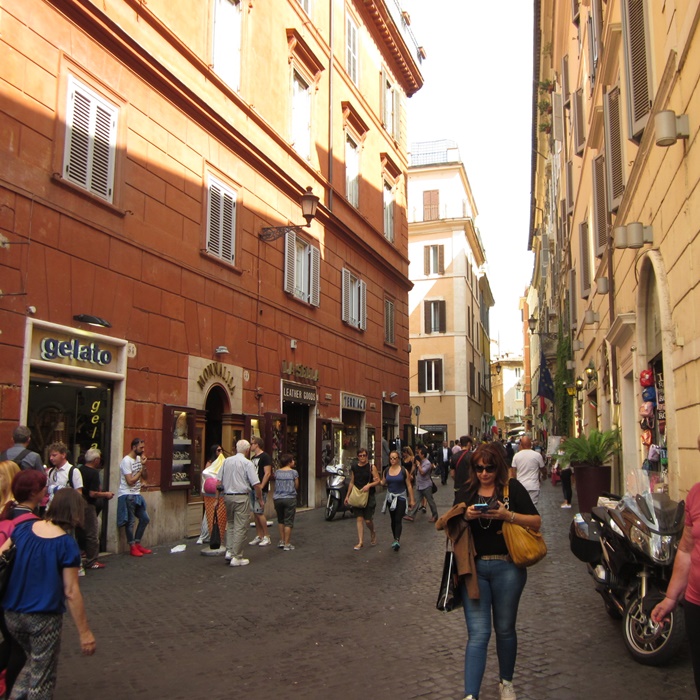 The best way of exploring Rome is on foot
The best way of exploring Rome is on footThe whole historic centre is pretty compact and small and you don't have to use any public transport to go around once you are there.
Most of the sights are situated within walking distance one to another, so you can easily walk from Colosseum and Roman Forum to Jewish Ghetto and Campo de' Fiori.
The Trevi Fountain and Spanish Steps are only 10 minutes away one from each other. From Villa Borghese park you can easily walk to the Spanish Steps (just take one of the streets leading down), and form Spanish Steps you can take a nice walk to the Vatican (and explore Rome along the way).
From historic centre, cross the Tiber River to reach Trastevere (great idea for exploring this lively district is joining a foodie tour).
To reach St Peter's Square from historic centre, you need to cross the bridge and walk along the long promenade that leads you to the square. The Vatican Museums are only 10-minute walk from there.
But, if you still want to hop on bus to speed up sightseeing, it's fairly cheap, ticket costs €1.50 (for 100-minute use).
Just be sure to skip the city taxi, as it can also add on your expenses if you take longer distances.
7. Eat in Rome on a budget (save on dining)
 Roscioli bakery is a great place for grabbing sweet or savoury snack
Roscioli bakery is a great place for grabbing sweet or savoury snackYou may think that dining in Rome is expensive but you can cut-out expenses if you grab your lunch from eateries instead of sitting in the restaurants.
In every corner of the city, you'll find food places offering delicious freshly baked snacks such as pizza al taglio (pizza sold sliced into squares or rectangles), sandwiches (focaccia with prosciutto or mortadella), suppli, arancini, selection of Italian pastries (plain or filled with custard, chocolate or pistachio cream), cannoli (Sicilian pastry), creamy gelato...
We recommend Pinsa Mpo, small eatery in Via dei Gracchi (short walk from Vatican Museums) offering delicious pinsa (Roman oval-shaped pizza) for eating there or take-away.
Not so expensive
Roman food tours
If staying in private accommodation, head to local grocery stores and prepare easy pasta meals with quality ingredients. Local open markets are ideal for buying food as they have a great choice of fruit and vegetables, meat, fish and seafood, fresh pasta, breads...
If you don't feel like cooking, you'll find there also ready-made meals such as parmigiana di melanzane or porchetta (roasted pork stuffed with herbs).
Or grab some bread, a little fresh pecorino, a few slices of prosciutto, some fruit, and make yourself a quick lunch or dinner.
We love Trionfale market (if staying in Prati neighbourhood); here you'll find everything you may need for a tasty lunch or dinner.
Most Italian supermarkets has a corner with cooked food. You can find here affordable lunch or dinner.
See our page on the best Roman food tours if you plan to go (this is an extra cost, but you may find affordable ones like this street food tour costing €39), on which you'll taste amazing food, meet new people and find out more about Roman everyday life.
A bottle of water at a stand outside a tourist sight can cost a couple of euros. Instead, buy a bottle of water from a café or, better yet, a grocery store. When it’s finished, don’t throw it out: refill it at one of the city’s more than 1,500 constantly-flowing fountains, which provide water that is clean, cold and perfectly safe to drink.
8. Spend less when shopping in Rome
Shopping in Rome is a great idea, especially if you want to buy some trendy clothes, shoes, jewellery or cosmetics. Visit historic centre near Spanish Steps, where you'll find exclusive brands such as Gucci, Prada, Bulgari, Max Mara and others.
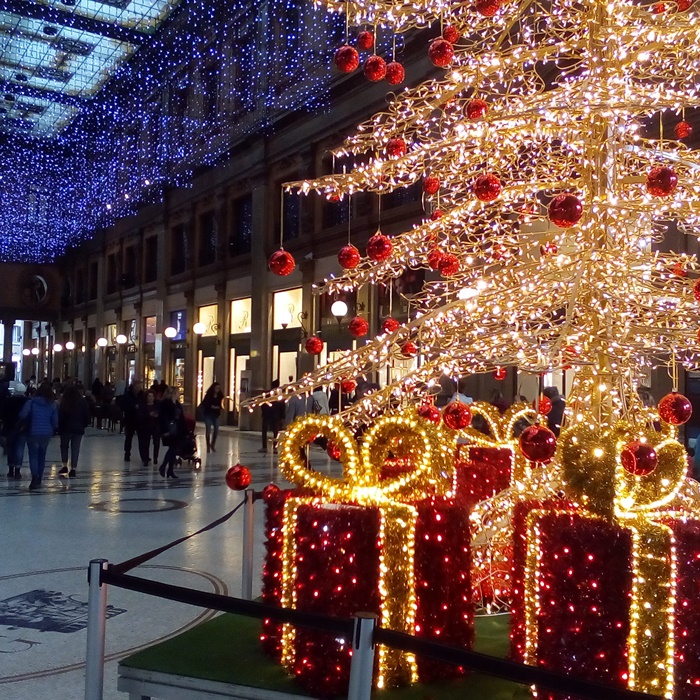 Shop in Rome on sales
Shop in Rome on salesIf you just need a pair of jeans or new shoes, go to Via del Corso, Via Cola di Rienzo or Via Nazionale, where you'll find usual global logos like H&M, Zara, Gap, Benetton and Intimissimi.
In La Rinascente, Italy's iconic department store, you'll find designer brands, cosmetics, home design and much more (located in Piazza Fiume and along Via del Tritone).
For big discounts, come to Rome when the sales are (saldi). This happens twice a year, once in winter (from 6th January until mid-February) and in the summer (from July 1st until mid-August).
In this period, you can find great discounts of even 50-80% on many goods.
There are also street markets all over Rome and the most popular one runs every Sunday at Porta Portese (Trastevere). Here you can shops affordable antiques, clothes, household goods and books.
Skip-the-Line
Rome Tickets:
More to Discover in Italy:
- Uffizi Gallery tickets
- Best day trips from Florence
- Leonardo Express train guide
- Best cooking classes in Rome
- Rome to Florence day trip
- Where to stay in Rome
